Refinishing a kitchen countertop can breathe new life into your kitchen without the expense and hassle of a complete renovation. Whether your countertops are worn, outdated, or simply in need of a refresh, refinishing can be a cost-effective solution. The process involves several steps, including surface preparation, repair, priming, painting, and sealing. Each step requires attention to detail and the right materials to ensure a durable and attractive finish. With the right approach, you can achieve professional-looking results that enhance the appearance and functionality of your kitchen.
The first step in refinishing a kitchen countertop is thorough surface preparation. This involves cleaning the countertop to remove any grease, grime, or residue. A mixture of warm water and mild detergent can be used for this purpose. Scrub the surface with a sponge or cloth, and rinse it thoroughly. Once the countertop is clean, it’s important to sand the surface to create a rough texture that will help the primer and paint adhere. Use medium-grit sandpaper (around 120-grit) and sand the entire surface evenly. After sanding, wipe down the countertop with a damp cloth to remove any dust.
Next, inspect the countertop for any damage, such as cracks, chips, or scratches. These imperfections should be repaired before proceeding with refinishing. For small chips and cracks, a two-part epoxy filler can be used. Follow the manufacturer’s instructions to mix the epoxy and apply it to the damaged areas with a putty knife. Allow the epoxy to dry completely, then sand it smooth with fine-grit sandpaper (around 220-grit). If there are larger areas of damage, you may need to consult a professional for repairs.
After repairing any damage, it’s time to apply a primer. Priming is a crucial step that helps the paint adhere to the countertop and provides a smooth, even base. Choose a primer that is suitable for your countertop material, whether it’s laminate, wood, or another surface. Apply the primer with a foam roller or brush, using long, even strokes to ensure full coverage. Allow the primer to dry according to the manufacturer’s instructions, typically for several hours or overnight.

Once the primer is dry, you can begin painting the countertop. Select a high-quality countertop paint that is designed to withstand the wear and tear of a kitchen environment. There are various options available, including water-based acrylic paints and epoxy-based paints. Apply the paint with a foam roller or brush, working in thin, even layers. Multiple thin coats will provide better coverage and durability than one thick coat. Allow each coat to dry completely before applying the next, following the manufacturer’s drying times.
After the final coat of paint has dried, it’s important to seal the countertop to protect the finish and provide a durable, water-resistant surface. There are several types of sealers available, including polyurethane, epoxy, and acrylic sealers. Choose a sealer that is compatible with your paint and suitable for kitchen use. Apply the sealer with a clean foam roller or brush, using even strokes to avoid bubbles and streaks. Depending on the type of sealer, you may need to apply multiple coats, allowing each coat to dry thoroughly before applying the next.
During the refinishing process, it’s important to work in a well-ventilated area to avoid inhaling fumes from the primer, paint, and sealer. Open windows and doors, and use fans to improve air circulation. If possible, wear a respirator mask to protect your lungs from harmful vapors. Additionally, cover any surrounding surfaces with drop cloths or plastic sheeting to protect them from drips and spills. Proper ventilation and protection will ensure a safer and more pleasant refinishing experience.
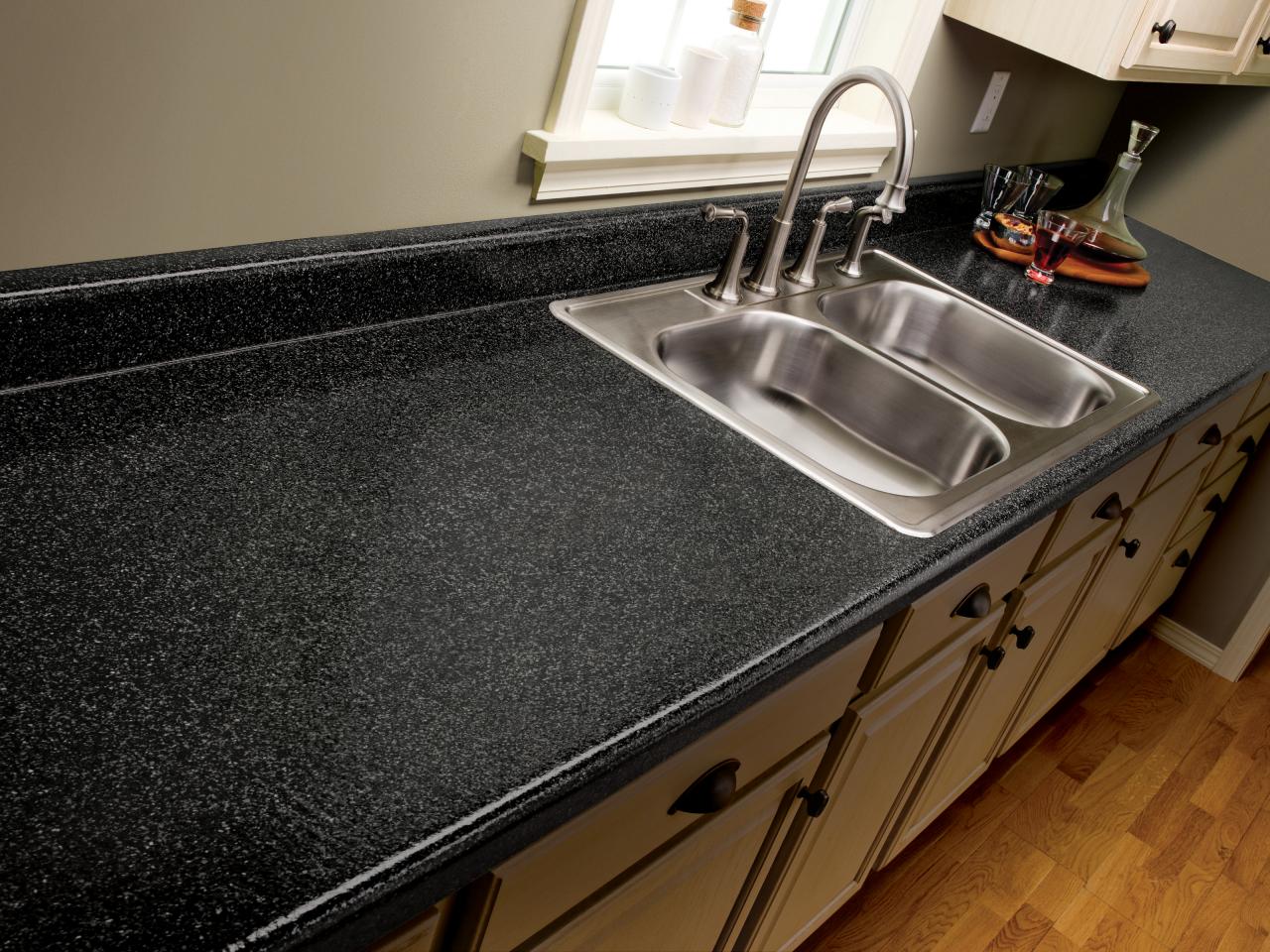
One of the benefits of refinishing a kitchen countertop is the ability to customize the color and finish to suit your design preferences. Whether you prefer a classic white, a bold color, or a faux stone finish, refinishing allows you to achieve the look you want without the expense of replacing the countertop. There are even countertop refinishing kits available that include all the materials and instructions needed to create a faux granite or marble look. These kits are a great option for DIY enthusiasts who want a high-end look on a budget.
Refinishing a countertop can also extend its lifespan, providing a fresh, new surface that can withstand daily use. While the refinished surface may not be as durable as a brand-new countertop, proper care and maintenance can help preserve the finish. Avoid placing hot pots and pans directly on the surface, use cutting boards to prevent scratches, and clean spills promptly to prevent staining. By taking these precautions, you can enjoy your refinished countertop for years to come.
For those who prefer a more natural look, refinishing a wooden countertop can enhance its beauty and protect the wood from damage. The process is similar to refinishing other types of countertops, with a focus on sanding, staining, and sealing. After sanding the surface to remove old finish and smooth out any imperfections, apply a wood stain in the desired color. Once the stain is dry, apply a food-safe sealer, such as mineral oil or a butcher block conditioner, to protect the wood and enhance its natural grain.
Another option for refinishing a countertop is to use concrete overlay. This involves applying a thin layer of concrete over the existing countertop to create a smooth, durable surface. Concrete overlays can be tinted with colorants to achieve a variety of finishes, from natural stone to solid colors. After applying the concrete, the surface is smoothed and sealed to protect it from stains and moisture. Concrete overlays are a versatile and durable option for those looking to update their countertops with a modern, industrial look.

If you’re not comfortable tackling a refinishing project yourself, there are professional services available that specialize in countertop refinishing. Hiring a professional can ensure a high-quality finish and save you time and effort. Professionals have the tools and experience to handle the refinishing process efficiently, and they can also provide advice on the best materials and techniques for your specific countertop. While this option may be more expensive than a DIY project, it can be a worthwhile investment for a long-lasting, beautiful finish.
When selecting materials for refinishing your countertop, it’s important to choose products that are specifically designed for countertops and kitchen use. Regular household paints and sealers may not provide the durability and resistance needed for a kitchen environment. Look for products that are labeled as countertop or kitchen-specific, and follow the manufacturer’s instructions for application and curing times. Using the right materials will help ensure a successful refinishing project and a durable finish.
Refinishing a countertop can be a rewarding project that transforms the look of your kitchen. By following the steps outlined above and taking the necessary precautions, you can achieve professional-looking results that enhance the beauty and functionality of your space. Whether you’re looking to update an old, worn countertop or customize your kitchen with a new color or finish, refinishing offers a cost-effective and versatile solution.
Refinishing a kitchen countertop involves several key steps: cleaning and sanding the surface, repairing any damage, applying primer and paint, and sealing the finish. Each step requires attention to detail and the right materials to ensure a durable and attractive result. With the right approach and a little patience, you can transform your kitchen countertop and enjoy a fresh, new look that suits your style and needs.

Common Mistakes to Avoid:
Skipping Surface Preparation: Failing to thoroughly clean and sand the countertop can result in poor adhesion of the primer and paint. Proper surface preparation is crucial for a durable finish.
Using the Wrong Materials: Not all paints and sealers are suitable for countertops. Using products not designed for kitchen use can lead to a finish that is not durable or resistant to daily wear and tear.
Applying Thick Coats: Applying thick coats of primer, paint, or sealer can lead to uneven coverage and longer drying times. Thin, even coats provide a smoother and more durable finish.
Ignoring Drying Times: Rushing the drying process can compromise the finish. Allow each coat to dry completely before applying the next to ensure proper adhesion and durability.
Not Repairing Damage: Overlooking chips, cracks, or other damage can result in a less-than-perfect finish. Properly repair all imperfections before priming and painting.
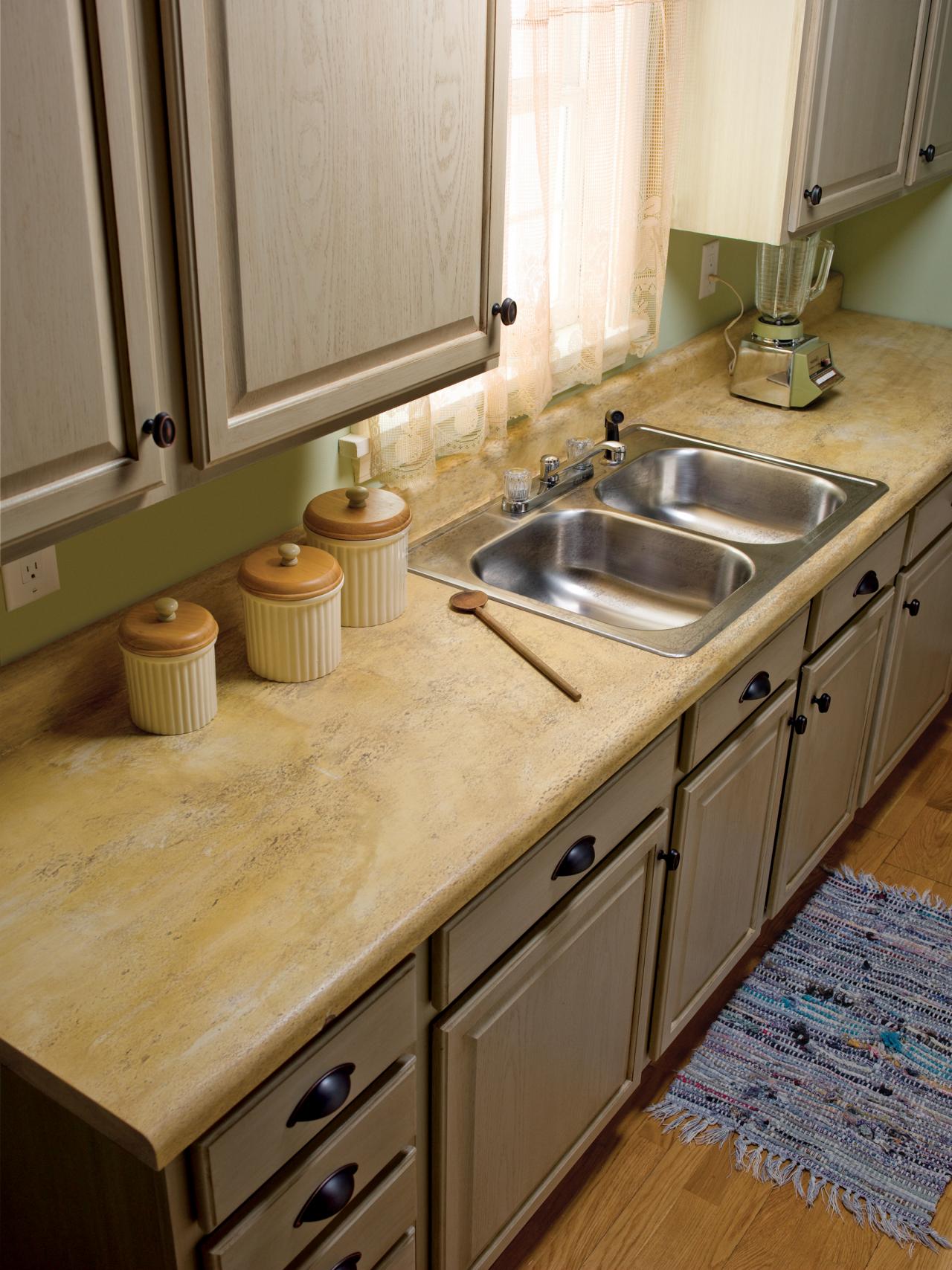
Poor Ventilation: Working in an enclosed space without proper ventilation can be hazardous due to fumes from the primer, paint, and sealer. Ensure adequate ventilation to protect your health.
Skipping the Sealer: Failing to apply a sealer can leave the painted surface vulnerable to stains and damage. The sealer provides a protective layer that extends the life of the finish.
Using Abrasive Cleaners: After refinishing, using abrasive cleaners can damage the new finish. Stick to mild, pH-neutral cleaners to maintain the countertop’s appearance.
Not Protecting Surrounding Areas: Paint and sealer can splatter onto cabinets, floors, and appliances. Use drop cloths or plastic sheeting to protect surrounding surfaces.
Underestimating the Time Required: Refinishing a countertop is not a quick project. Allocate sufficient time for each step, including drying times, to achieve the best results.
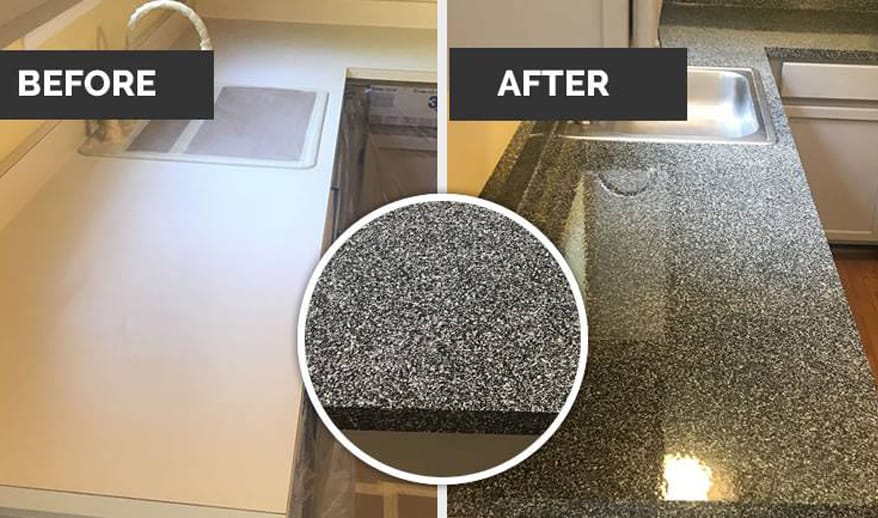
How long does it take to refinish a kitchen countertop?
Refinishing a kitchen countertop typically takes several days to a week, depending on the size of the countertop and the drying times for each coat of primer, paint, and sealer. Preparation and repair work can take a few hours, while each coat of primer and paint usually requires several hours to dry, and the sealer may need 24-48 hours to cure fully. It’s important to allocate enough time for each step to ensure a durable and attractive finish.
Can I refinish my countertop without removing it?
Yes, you can refinish your countertop without removing it. Most refinishing projects are done in place, as removing the countertop can be complicated and unnecessary. Properly protect surrounding areas with drop cloths or plastic sheeting, and ensure good ventilation in the workspace. This approach allows you to refinish the countertop without the hassle of removal and reinstallation.
What types of countertops can be refinished?
Many types of countertops can be refinished, including laminate, wood, and solid surface materials. Each type requires specific preparation and materials. For example, laminate countertops need thorough sanding and a high-adhesion primer, while wood countertops benefit from staining and sealing with food-safe products. It’s important to choose the right materials and techniques for your specific countertop type to achieve the best results.

How durable is a refinished countertop?
A refinished countertop can be quite durable if properly prepared, painted, and sealed. While it may not be as resilient as a brand-new countertop, a refinished surface can withstand daily use in a kitchen. To maintain durability, avoid placing hot items directly on the surface, use cutting boards to prevent scratches, and clean spills promptly. Regularly inspect the sealer and reapply as needed to keep the countertop protected.
Can I change the color of my countertop through refinishing?
Yes, refinishing allows you to change the color of your countertop. By using countertop-specific paint, you can choose any color that suits your design preferences. There are also refinishing kits available that offer various colors and finishes, including faux granite and marble looks. This flexibility makes refinishing an excellent option for updating the appearance of your kitchen.
Is it necessary to hire a professional for countertop refinishing?
While it is possible to refinish a countertop as a DIY project, hiring a professional can ensure a higher quality finish and save time and effort. Professionals have the experience, tools, and materials needed to achieve a durable and attractive result. If you’re not confident in your DIY skills or if your countertop has extensive damage, consulting a professional can be a worthwhile investment.
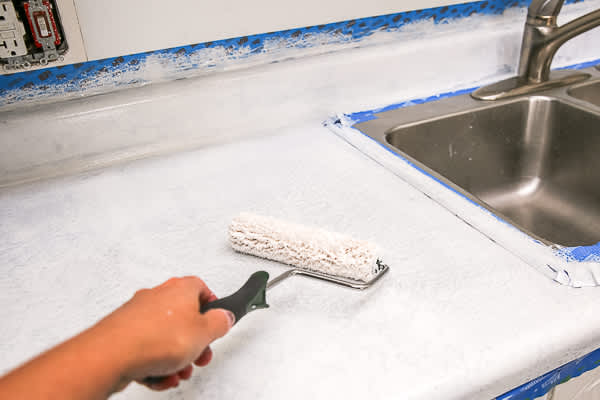
How to Paint Laminate Kitchen Countertops DIY
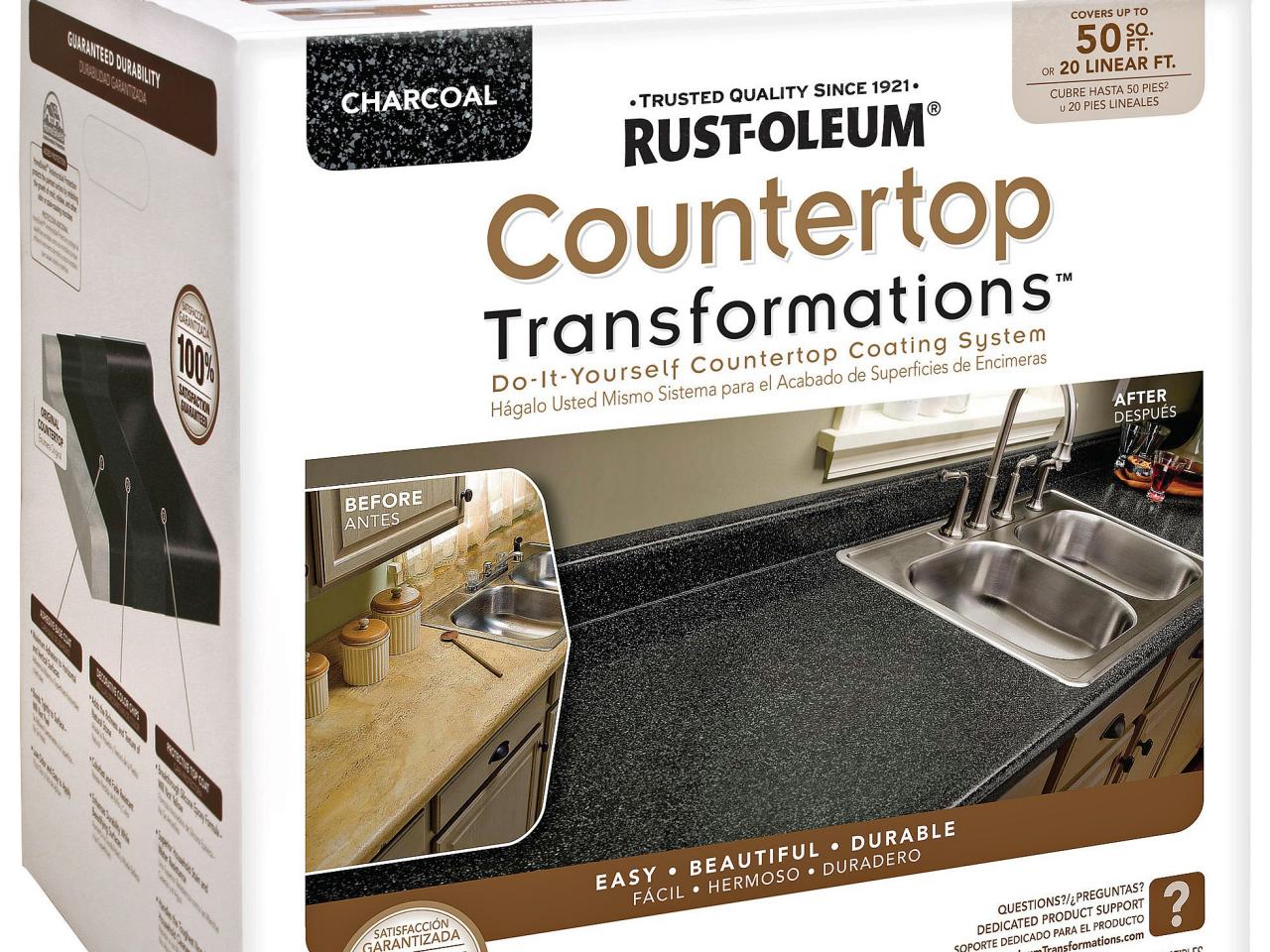
How to Paint Countertops – Looks Like Slate

Related articles: